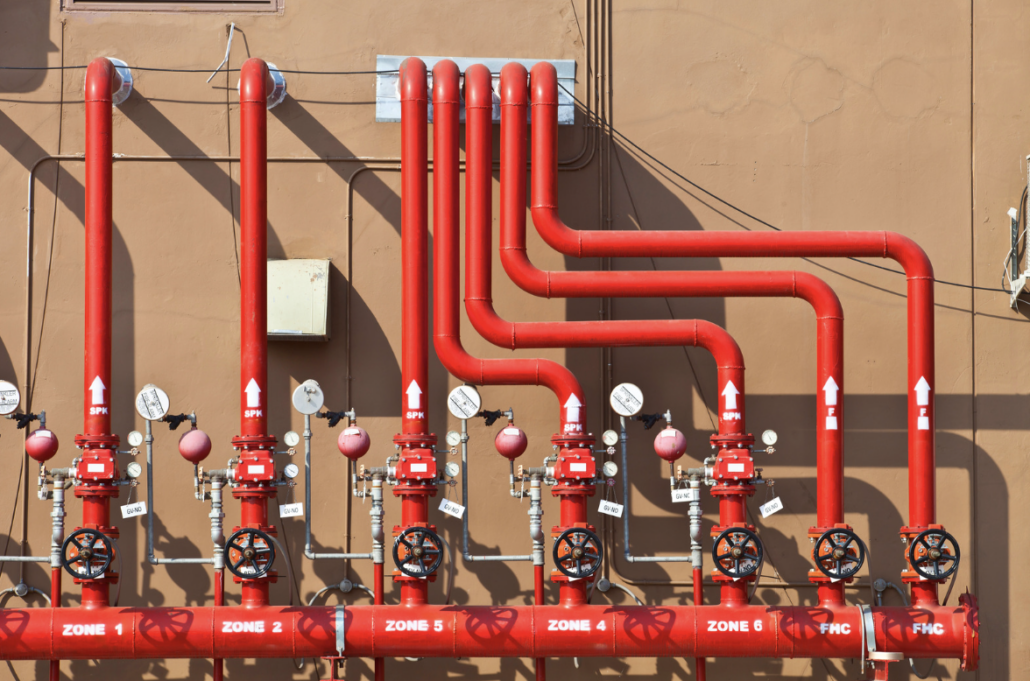A Detailed Introduction to National Fire Protection Association (NFPA) Guidelines

Founded in 1896, the National Fire Protection Association (NFPA) has a rich history of promoting public safety through published NFPA guidelines that include codes & standards developed to minimize the possibility of fire and other risks. A self-funded, worldwide organization, the NFPA’s guidelines and safety standards are designed to help eliminate death, injury, and property & economic loss from fire, electrical hazards, and other potentially dangerous situations.
Did You Know: One of the earliest sets of installation rules was issued by the New York Board of Fire Underwriters in 1881, and subsequently was adopted in 1882.
NFPA standards are comprised of more than 300 codes & standards that are administered by more than 260 NFPA Technical Committees that cover specific areas of public safety – from fire prevention to electrical safety, and more. The 10,000 volunteers serving on technical committees are experts in their fields, and work collaboratively to develop, improve, and modify safety standards.
What’s interesting is that NFPA standards are not static. Rather, the standard NFPA code development process allows for safety standards to evolve as needed. As an example, the NFPA originally set standards for how to inspect electrical fire pumps in multi-story buildings. These powerful pumps are needed to push water up many stories within a high-rise to distribute water through fire sprinkler systems on the higher floors.
However, the electric fire pumps can build up a dangerous electrical charge. When life safety inspectors touched the fire pump, arc flashes resulted in the deaths of a number of building inspectors. After these deaths occurred, the NFPA commissioned a group of fire safety industry experts to review the existing standards, investigate how and why inspectors were killed, and develop recommendations for how standards for inspecting electric fire pumps should be changed to prevent more deaths.
The recommendations included a simple pass-fail inspection and keeps inspectors from having to touch electrical fire pumps. Now that the inspection standard has been changed, if an electric fire pump does not pass a simple test, the inspector does not touch the pump, and indicates that a master electrician needs to be called to resolve the issue. This change in fire pump inspection standards was needed to save lives, and now includes the deployment of master electricians who know how to safely work with high-voltage equipment.
In addition to published codes & standards, the NFPA also developed a color-coded number system for quickly identifying the hazard level. Designated as NFPA 704, the visual hazard identification system features a color-coded diamond divided into 4 quadrants. Numbers are used in the upper three quadrants of the diamond to identify the degree of health hazard:
- Blue indicates a health hazard.
- Red indicates a flammability hazard.
- Yellow indicates a reactivity hazard.
Why Is The NFPA Important?
The NFPA’s work is important because it provides information, standards, research, training, education, and advocacy with two key goals:
- Save lives
- Protect property
In addition, NFPA standards have improved building construction standards which promotes public safety. Improved building codes result in structures that are safer for people to live and work. Improved building codes also reduce the risk of economic loss from fires, haz-mat releases, and more.
Who Enforces NFPA Standards?
While the NFPA is not a governmental agency, it has enormous influence and routinely works with government agencies and government building authorities worldwide. NFPA codes and standards are reviewed & typically enforced by authorities having jurisdiction – such as fire department / fire service officials, those enacting legislation to improve public safety, and other stakeholders. Emergency response professionals also look to NFPA codes for guidance and rely on adherence to NFPA codes as a means of protecting first responders dealing with fires, release of hazardous materials, and more.
Are NFPA and ISO Standards The Same?
The National Fire Protection Association, based in Massachusetts, and the International Organization for Standardization (ISO), based in Geneva, Switzerland, are both international, non-governmental organizations. Their standards development processes are quite similar, but their areas of focus are different.
The NFPA focuses on setting life safety standards, specifically for fire safety standards, fire code, fire protection system standards, and inspection process and inspection frequency standards.
The ISO develops standards that are internationally agreed upon by subject matter experts, and the standards are much broader in scope. ISO standards cover a huge range of activities – from how a product should be manufactured or how a specific process should be managed and organized to how to deliver a service or supply materials.
Highlights of NFPA Electrical Codes
The National Electrical Code (NEC) – known as NFPA 70 – has been adopted in all 50 U.S. states – and it is the benchmark for safe electrical design, installation, and inspection. The goals of NFPA 70 standards are to protect people and property from electrical hazards.
NFPA 70 electrical standards cover the installation and removal of electrical conductors, equipment, and raceways; signaling and communication conductors, equipment, and raceways; and optical fiber cables for:
- Public and private premises
- Yards, lots, parking lots, carnivals & substations
- Installations of conductors and equipment that connect to the supply of electricity
- Installations used by the electric utility (office buildings, warehouses, garage, etc.) that are not part of a power generating plant, substation, or control center
- Installations supplying shore power to ships & watercraft in marinas and boatyards
- Installations used to export electric power from vehicles to premises wiring
NFPA 70 does NOT cover:
- Ships, watercraft other than floating buildings, railway rolling stock, aircraft, or automotive vehicles other than mobile homes and recreational vehicles
- Underground installations in mines
- Installations of railways
- Communications equipment under the exclusive control of communications utilities
- Installations under the exclusive control of an electric utility
NFPA codes undergo updates every several years, but the NFPA often issues minor code changes as amendments on a yearly basis. The NFPA is offering a 2023 version of NFPA 70 Electrical Code. The 2023 version of NFPA 70 features a number of proposed code amendments. The NFPA is soliciting public comments on the recommended code changes – with public comment due by Feb. 10, 2023.
NFPA’s Fire Classifications
The NFPA also has developed a system for classifying various types of fires. Fire classification is important because the type of fire, or potential type of fire, dictates what type of fire extinguisher would be required.
Class A Fire
A Class A fire is the result of common combustible materials such as wood, cloth, paper, and many plastics.
Class B Fire
A Class B fire is the result of flammable liquids or gas such as alcohol, ether, gasoline, or grease.
Class C Fire
A fire designated as a Class C fire is due to electrical failure from appliances, electronic equipment, and/or wiring.
Class D Fire
Class D fires occur when metallic substances such as sodium, titanium, zirconium, or magnesium burn.
Class K Fire
Class K fires cover grease or oil fires that occur specifically from cooking.
Highlights of the Main NFPA Codes & Standards
While electricians are mainly concerned with NFPA 70, there are a number of different NFPA codes & standards that deal with different aspects of public safety, including fire protection systems in general, installation and maintenance of sprinkler systems, installation and maintenance of fire alarm and signaling systems, fire extinguishers, and more.
Here’s a high-level overview of the various NFPA codes:
NFPA 1: Advances fire and life safety for the public and first responders as well as property protection, by providing a comprehensive, integrated approach for fire code regulation and hazard management.
NFPA 13: This body of code standards sets the standard for the design and installation of automatic fire sprinkler systems and exposure protection sprinkler systems.
NFPA 25: This set of codes sets the standard for the inspection, testing, and maintenance of water-based fire protection systems.
NFPA 70: Sets the foundation for electrical safety in residential, commercial, and industrial occupancies worldwide.
NFPA 70E: This covers requirements for safe work practices that are designed to protect personnel by reducing exposure to major electrical hazards, including electrical shock, electrocution, arc flash and arc blast, and assist with compliance with OSHA 1910 Subpart S and OSHA 1926 Subpart K.
NFPA 99: These codes establish criteria for levels of health care services or systems based on risk to patients, staff, or visitors in health care facilities to minimize the hazards of fire, explosion, and electricity.
NFPA 101: Known as the Life Safety Code, NFPA 101 is the most widely used source for strategies to protect people based on building construction, protection, and occupancy features that minimize the effects of fire and related hazards.
Anyone dealing with electrical or mechanical contracting needs to know about and adhere to NFPA codes as a standard course of operation. Learning more about the various applicable NFPA guidelines benefits contractors and the general public alike.

Billy Marshall explores how Fire Protection contractors can boost growth and productivity with technology in this recording of Off the Record with Paul Giannamore filmed at the NFPA Conference. Billy Marshall, founder of ServiceTrade, understands the business of commercial service for fire protection equipment, which is why he founded Service Trade—a platform designed to help contractors streamline inspections, […]
In the fire protection industry, inspections are more than a compliance checkbox—they’re the gateway to stronger customer relationships, more predictable revenue, and a more efficient service operation. But for too long, inspections have been riddled with delays and disruptions, fragmented systems, and manual processes that limit your team’s productivity and profitability. That’s why we built […]
